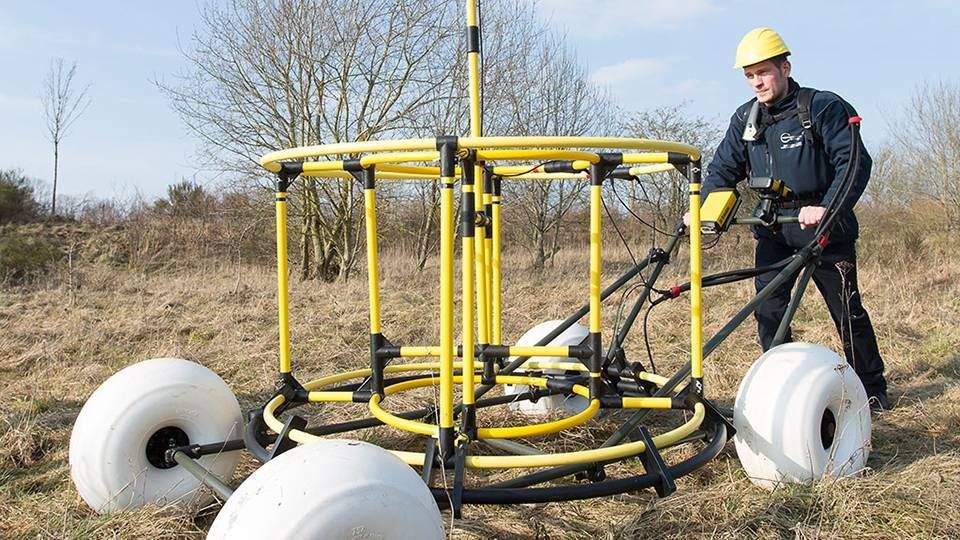UPEX® 745 DF
The UPEX® 745 DF is a deep active search system, based on the electromagnetic pulse induction principle, designed and produced by us in Germany. The system is used for detecting ferromagnetic and non-ferrous metal objects, mainly in the disposal of unexploded ordnance and geophysical investigation of the subsurface. With the UPEX® 745 DF, Ebinger completes its traditional series of pulse induction-based measuring systems in terms of resolution and detection depth. "German innovation from Ebinger's ideas laboratory".
Other features
The circular arrangement of the coils significantly improves the signal-to-noise ratio by up to 50%, significantly increasing the detection depth. The 5 time gates and the decoupling of the receiving coils significantly improve detection and resolution. The sizing and geometric placement of the inner receiving coils in combination with early measurement also contribute to the improved performance and increase the resolution of small near-surface objects. The dimensions and placement of the external receiving coils have been adapted to the detection of larger and more deeply buried targets. The geometric dimensioning of the system provides a significant increase in productivity thanks to the large scanning area covered.ApplicationOne of the basic requirements when using electromagnetic methods for detecting metallic anomalies is a high contrast in the electrical parameters of the objects to be detected compared to the natural conductivity of the substrate. Iron has an extremely high conductivity of 107 S/m and an electrical resistance of 10-7 Ωm respectively. This corresponds to a difference of 7 orders of magnitude compared to the best conductive soils/rocks. The same applies to the magnetic permeability (magnetite μr =5, iron μr =120). This extremely high contrast with regard to electrical conductivity and magnetic permeability compared to naturally occurring soils/rocks constitutes the basic requirement for detection when using electromagnetic methods. This measurement method belongs to the family of transient electromagnetic methods (TEM), which operate within the time range. A source field is used that induces current systems in the subsurface, the propagation of which depends on the conductivity distribution in the subsurface. In the case of inductive transmitter coupling, a constant direct current flows in a horizontal transmitter coil. The constant transmitter current is turned off or on as abruptly as possible and causes the collapse of the constant primary magnetic field, which has almost the geometry of a vertical magnetic dipole (VMD). At the same time, the time-dependent primary magnetic field generates a current system according to Ampere's law and Faraday's law of induction. Depending on the substrate, it propagates both vertically and laterally (diffusion) as time passes and induces eddy currents in the conducting substrate in accordance with Maxwell's equations. This flow system decreases due to ohmic losses, which in turn produce a secondary magnetic field, which also decreases with time. The time-dependent changes in the magnetic field components induce a decay voltage (transient) that will be measured in the receiving coils (here the change in the vertical magnetic component with time).

Request a quote
GELAN Detection Systems BV
Kievitsven 30,
5249 JJ Rosmalen
+31 (0)73 890 50 20
info@gelan.nl
KVK: 940.10.927
VAT: NL8666.02.781.B01
IBAN: NL93 INGB 0007 7627 11



